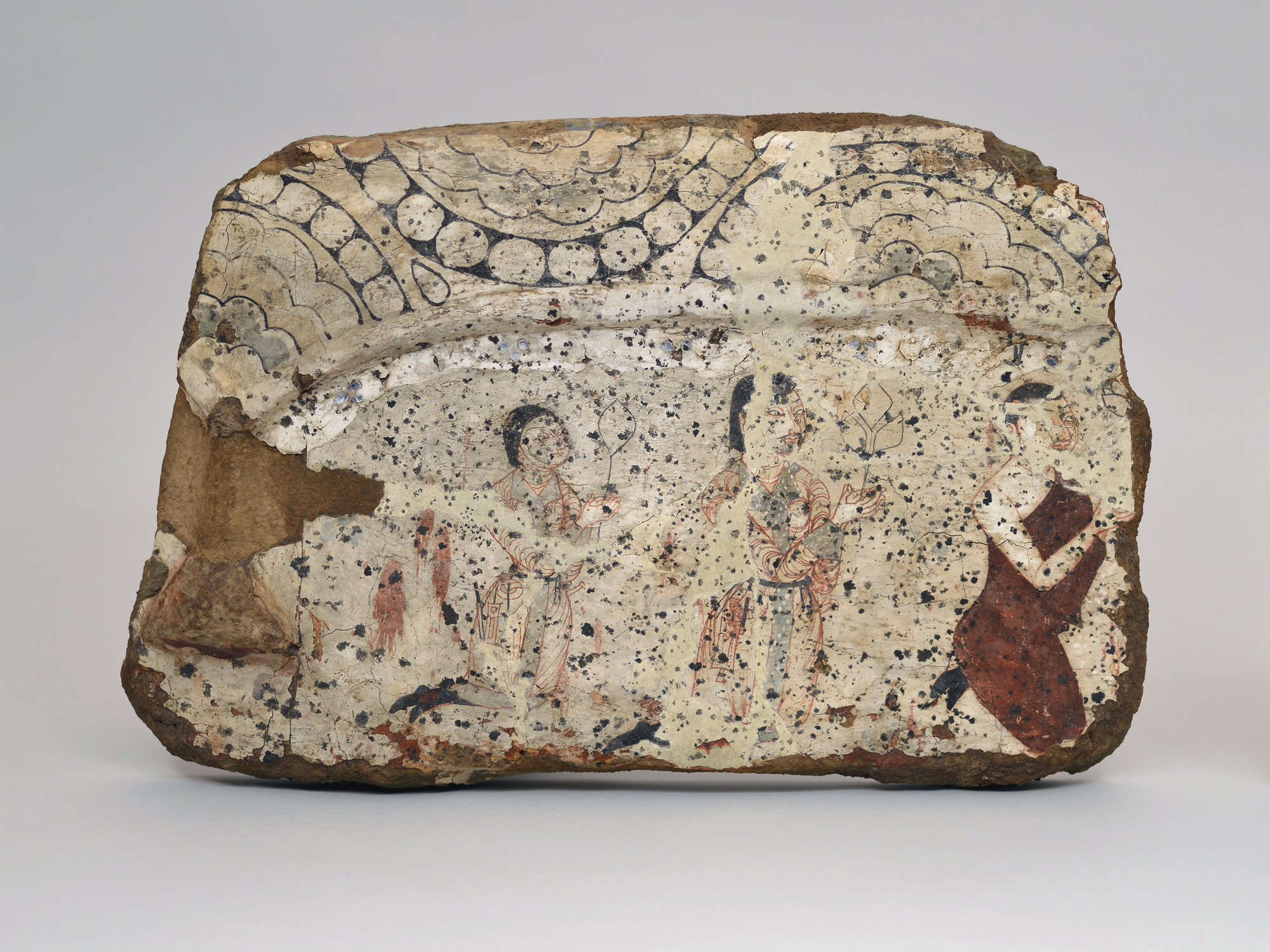Frescoes, Statue of a Propitiating Man
- Central Asia
- Tarishlak, China
- from the 7th to the 8th centuries AD
- multi-colored plaster
- 29.0cm in height Width 44.0cm
The upper part is decorated with a goban pattern border with blooming flowers. The lower part shows three people holding a memorial service. The goban decoration was favored in Sasanian empire art and spread to Sogd (current Uzbekistan / Tajikistan), and their textiles were also depicted in the Kizil mural (Cave number 60). The goban pattern in this work traces back to that of the Sasanian empire. Looking upfront, to the right of the people holding memorial service is a monk wearing its outer garment in hentan-uken style. The other two people wearing nomad style tunics are likely to be laymen holding a memorial service. The latter have several decorations around their waist and hold something that looks like a lotus. Due to significant damage, their eyes and nose are unclear. However, the facial outline drawn in vermilion indicates that it is a work of the Hotan region. This is the left half of what Aurel Stein excavated in the Buddhist temple ruins north of Hotan.

